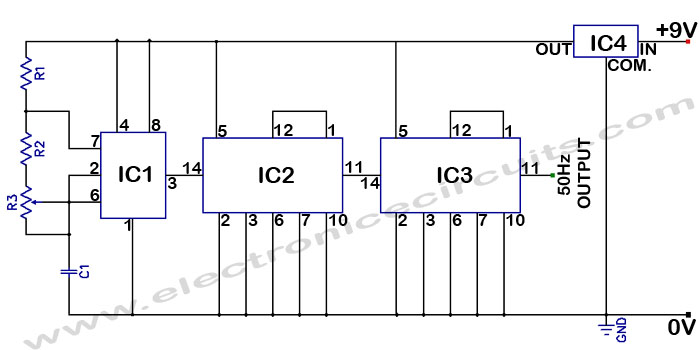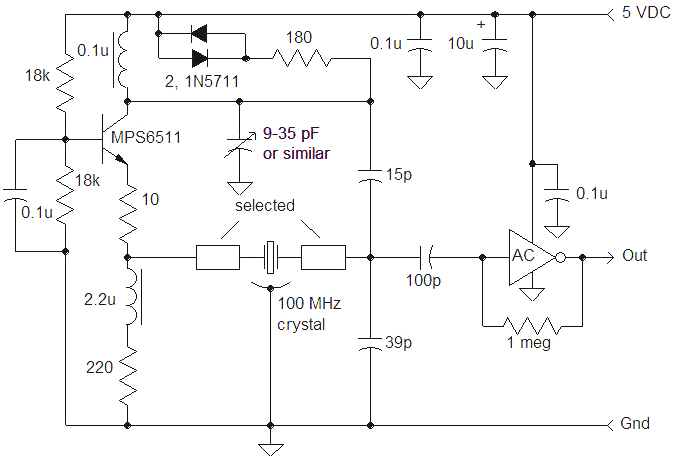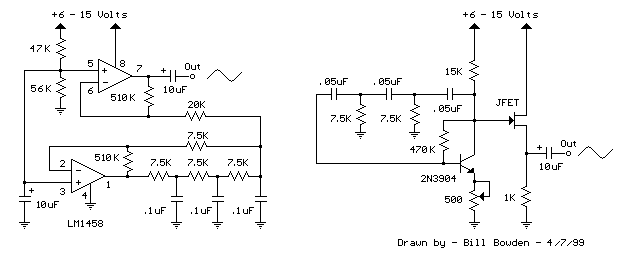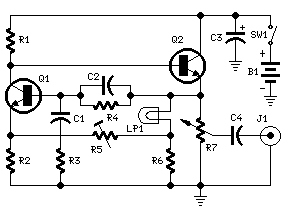
Sine Wave Oscillator
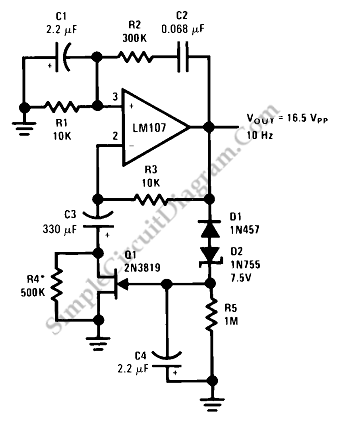
This is a sine wave oscillator circuit, also known as an amplitude-stabilized sine-wave oscillator. It can provide a high purity sine wave output.
The sine wave oscillator circuit is designed to generate a stable and high-quality sine wave output, which is essential in various applications such as signal processing, audio synthesis, and testing equipment. The amplitude-stabilized feature ensures that the output waveform maintains a consistent amplitude despite variations in load or supply voltage, making it reliable for precise applications.
Typically, this circuit employs operational amplifiers (op-amps) or specialized oscillator ICs to produce the sine wave. The design may incorporate feedback mechanisms that help stabilize the amplitude of the output. Key components include resistors, capacitors, and inductors, which are configured to set the frequency of oscillation and shape the waveform.
To achieve high purity in the sine wave output, the circuit may also integrate filtering stages that eliminate unwanted harmonics and noise, thus enhancing the overall signal quality. The output frequency can often be adjusted by altering the values of the timing components, allowing for versatility in different applications.
In summary, the amplitude-stabilized sine wave oscillator circuit is a crucial tool in electronics, providing a dependable source of sine wave signals for a variety of uses while ensuring minimal distortion and high fidelity in the output.This is a Sine Wave Oscillator circuit. This circuit as known as? amplitude-stabilized sine-wave oscillator. It can gives high purity sine-wave output down to . 🔗 External reference
The sine wave oscillator circuit is designed to generate a stable and high-quality sine wave output, which is essential in various applications such as signal processing, audio synthesis, and testing equipment. The amplitude-stabilized feature ensures that the output waveform maintains a consistent amplitude despite variations in load or supply voltage, making it reliable for precise applications.
Typically, this circuit employs operational amplifiers (op-amps) or specialized oscillator ICs to produce the sine wave. The design may incorporate feedback mechanisms that help stabilize the amplitude of the output. Key components include resistors, capacitors, and inductors, which are configured to set the frequency of oscillation and shape the waveform.
To achieve high purity in the sine wave output, the circuit may also integrate filtering stages that eliminate unwanted harmonics and noise, thus enhancing the overall signal quality. The output frequency can often be adjusted by altering the values of the timing components, allowing for versatility in different applications.
In summary, the amplitude-stabilized sine wave oscillator circuit is a crucial tool in electronics, providing a dependable source of sine wave signals for a variety of uses while ensuring minimal distortion and high fidelity in the output.This is a Sine Wave Oscillator circuit. This circuit as known as? amplitude-stabilized sine-wave oscillator. It can gives high purity sine-wave output down to . 🔗 External reference

